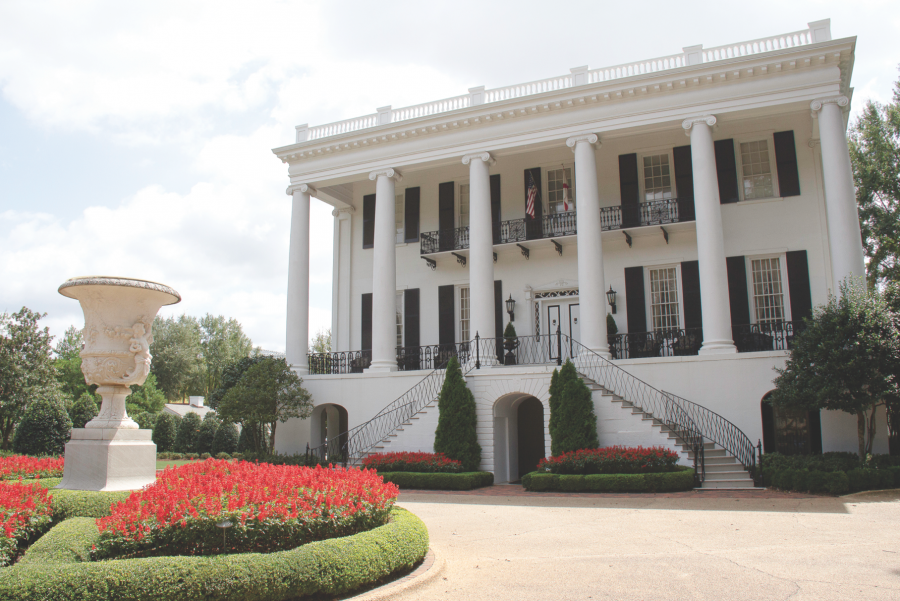Set back from the bustling traffic of University Boulevard sits the iconic white house of the University: the President’s Mansion. Overlooking the heart of campus, the antebellum home represents not just the residence of campus leaders, but a historical artifact preserved for over 170 years.
“Early on, the building was so big and stunning, that it was a focal point of the campus, and it survived the Civil War,” Tom Land, institutional records analyst for The University of Alabama, said. “You have a history with it – it’s one of those buildings that did survive. So it’s something that we all have in common, that every alum has – it’s the President’s Mansion.”
The building, which was constructed between 1839 and 1841, was not originally included in the campus plans, according to University records. UA’s second president, the Rev. Basil Manly, and the Board of Trustees passed a resolution in 1838 appropriating funds for the building.
“Originally, it was not intended to be there,” Land said. “Dr. Manly wanted it to be a part of campus near the academic buildings, and that’s why it was located in the place that it is. I like it better this way because it makes the president a part of the campus. He is right there in the middle of everything.”
The mansion’s construction was planned and supervised by architect Michael Barry and was designed on a large scale for the era. The original cost for building totaled $18,000 and exceeded more than the Board of Trustees intended to spend. Included in the plans were a wooden barn and carriage house, a privy, a washhouse, a kitchen and two slave quarters.
According to University records, on April 6, 1865, the University was set ablaze by Yankee Soldiers, also known as Craxton’s Raiders. The president at the time, Landon Garland, and his family had sought refuge at Bryce Hospital, but his wife, Frances Louisa Garland, returned to save the mansion from destruction.
Today, the mansion stands, situated between Rose Administration and Little Hall, and is now the home to the University’s 37th president, Guy Bailey, as of Tuesday.
“I’d never been in the president’s mansion, and it’s an absolutely beautiful place,” Bailey said.
The building, which has received multiple renovations over the years, features three floors. The first two are used for public events and tours, while the third floor remains the private residence of the University’s president and his wife. The most notable renovation, a complete remodel, was in 1908. A central steam heating system, new floors, new plumbing and wiring were installed in addition to the exterior being re-stuccoed and painted white.
“We live on the third floor and it’s very comfortable,” Bailey said. “It’s been made into a modern apartment, so it’s a great place to live.”
Cathy Andreen, UA spokeswoman, said all UA presidents use the President’s mansion for official University functions and entertaining; however, presidents choose whether or not to live full time in the mansion based on personal and family needs.
Bailey, who will be residing in the mansion full time, said he enjoys living in the center of campus.
“It’s great to look out every day and see students walking to class and see all that activity,” he said.
For some, the mansion remains an elaborate house located across from Denny Chimes, but for many it acts a symbol of the University’s history.
“The Chimes weren’t built until 1929, and people nowadays tend to think of the Chimes and the Quad, but in terms of the long-term history of the University, everybody has had the President’s Mansion,” Land said. “[It] has a very long history, and I don’t think we get too far from it; it’s part of the charm.”









